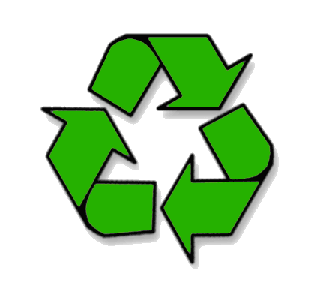Green Computing
What is Green Computing?
Global warming and environmental change have become big issues with
governments, corporations and your average Joe alike all seeking out new
ways to green up their daily activities. Computers certainly make up a
large part of many peoples lives and traditionally are extremely
damaging to the environment, which begs the question: What is Green
Computing?

Green Computing is the study and practice of minimizing the
environmental impact of computers through efficient: manufacturing, use,
and disposal.
Problems of Electronic Waste
Electronic waste is an increasing problem globally due to the quick
obsolescence of electronics, which make up a staggering 70% of all
hazardous waste. Computer waste is high in many toxic materials such as
heavy metals and flame-retardant plastics, which easily leach into
ground water and bio-accumulate. In addition, chip manufacturing uses
some of the deadliest gases and chemicals known to man and requires huge
amounts of resources.
In an average year 24 million computers in the United States become
obsolete. Only about 14% (or 3.3 million) of these will be recycled or
donated. The rest -- more than 20 million computers in the U.S. -- will
be dumped, incinerated, shipped as waste exports or put into temporary
storage to be dealt with later. We never stop to consider what happens
when our laptop dies and we toss it. The reality is that it either rots
in a landfill or children in developing countries end up wrestling its
components apart by hand, melting toxic bits to recover traces of
valuable metals like gold.
Wasting Electricity
The manufacturing of a computer consumes 1818 kw/h of electricity before
it even gets turned on and when running, a typical computer uses 120
watts. Research shows that most PCs are left idle all day, and many of
them are left on continuously. Every time we leave computers on we waste
electricity without considering where that electricity comes from. The
majority of the world's electricity is generated by burning fossil fuels
which emit pollutants such as sulphur, and carbon dioxide into the air.
These emissions can cause respiratory disease, smog, acid rain and
global climate change.
The Future of Green Computing
A Canadian company, Userful Inc. (http://www.userful.com) have come up
with a solution that turns 1 computer into 10 - DiscoverStation. Quickly
becoming the standard for green computing worldwide, DiscoverStation
leverages the unused computing power of modern PC's to create an
environmentally efficient alternative to traditional desktop computing.
Multiple users can work on a single computer by simply attaching up to
10 monitors, mice and keyboards. This makes it possible to reduce CO2
emissions by up to 15 tons per year per system and reduce electronic
waste by up to 80%. Userful has recently stated that in the last year
their software has saved over 13,250* tons of CO2 emissions, the
equivalent of taking 2,300 cars off the road. (More info at: http://userful.com/greenpc)
The European Union
The European Union is tackling the problem twofold. Companies are now
required to produce computers free of the worst toxic materials and are
responsible for taking back their old products. Faced with disassembling
parts and cycling them back into the fabrication process, companies are
making more careful decisions about how those parts are assembled in the
first place. In 2002 NEC came out with the first computer to use
lead-free solder, a fully recyclable plastic case, and which contained
no toxic flame-retardants. Since then many computer companies worldwide
have started selling lead-free PCs and it is becoming common practice
for companies to offer their customers free recycling of their old
computers.
Go Green
Here are some suggestions that will help you reduce your computer
energy: - Don't use screen savers. They waste energy, not save it. - Buy
computers & monitors labeled "energy star" which can be programmed to
automatically "power-down" or "sleep" when not in use. - If you are
using more than 1 PC, Userful's 10 to 1 advantage can save electricity
and your wallet. - Turn your computer and peripherals off when not in
use. This will not harm the equipment. - Use flat panel monitors, which
use about half of the electricity of a cathode-ray tube (CRT) display. -
Buy ink jet printers, not laser printers. Ink jet printers use 80 to 90
percent less energy than laser printers and print quality can be
excellent.
If all of us did this every day, we could make a small difference. We
only have one earth; let's treat it right.
About the author
Cathie Walker has been working online since early 1995. Named "Queen of the Internet" by the New York Times, her strengths lie in understanding the user experience and in creating site stickiness. Cathie is a web site designer/producer, writer, teacher, marketer, consultant, editor, interior designer and dog owner who is looking for the next shiny object to catch her attention. Portfolio: http://www.cathiewalker.com